
As previously mentionned in our June 2023 post (here), accurate sound pickup from a specific location is often a challenge in noisy environments. In that study, we reviewed certain one-dimensional beamforming techniques, such as the broadside and the end-fire ones and concluded that the audio operations used are fairly simple, consisting of a sum for the first one and a delay, phase inverter plus a sum for the other.
This short new post describes a two-dimensional version of the broadside configuration: the planar array.
As shown in Figure 1, a planar array can be understood as a combination of two broadside beamformers arranged in a perpendicular way to one another. The resulting planar array will be “bidirectionnal” and orthogonal to the microphone’s plane.
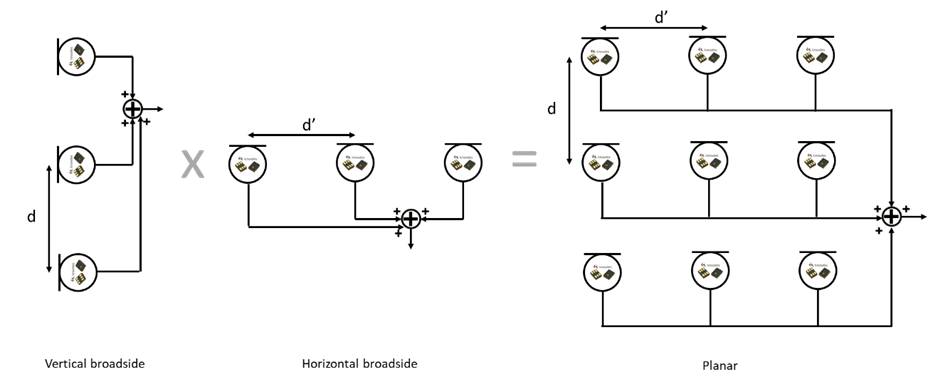
Planar arrays show their full potential compared to a simple one-dimension beaformer when changing the number of microphones and/or the separation distance between rows and columns.
Figure 2 below illustrates the beam (3D directivity as a function of theta and phi) obtained at 1k Hz for a 4 x 4 microphones configuration with a 10 cm spacing between the microphones. Figure 3 shows an interesting way to enlarge the beam in one direction, by removing a row/column of 4 microphones, resulting in a rectangular array of 3 x 4 microphones.
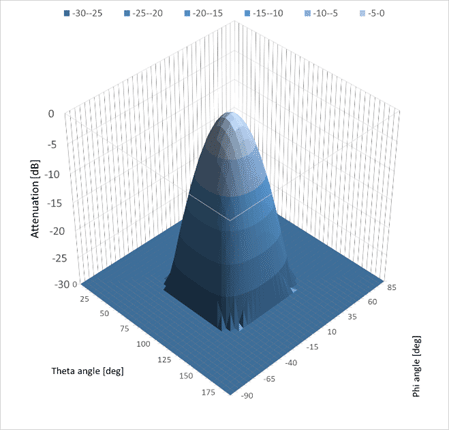

Figure 4 down below shows that a similar beam broadening can be achieved by playing with the spacing distance in one direction, resulting in a 4 x 4 array with a distance of 0.07m in one direction and of 0.1 m in the perpendicular direction.
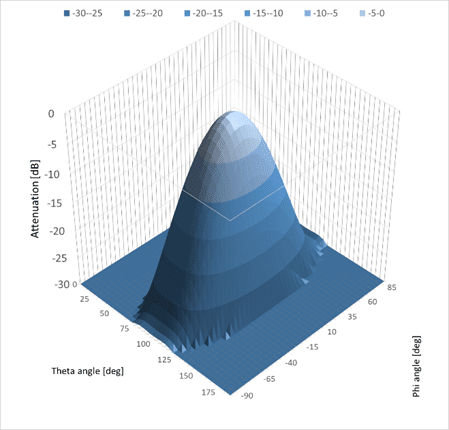
Another advantage of planar arrays over broadside configurations is the ability to steer the beam diagonally. In Figure 5 below, we can see the beam obtained at 2k Hz (for the same 4×4 microphone array) while Figure 6 shows the steering obtained by applying a phase shift of 25° in both directions.
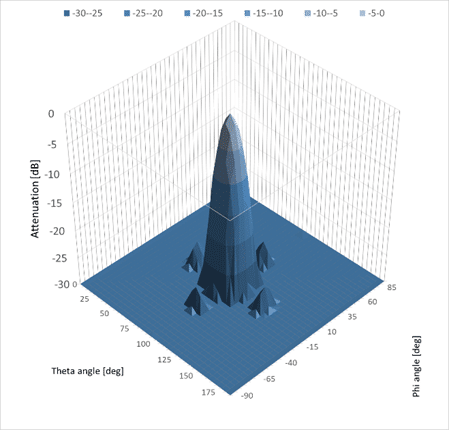
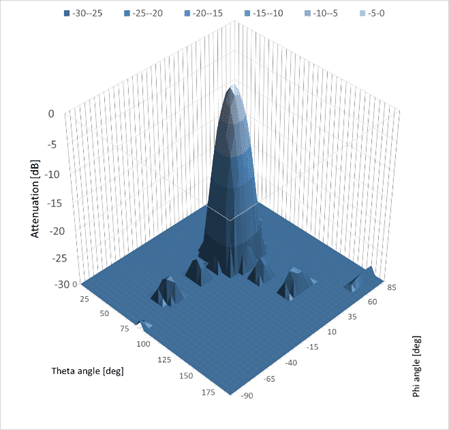
Are you looking to improve your directivity performance by moving from 1D to 2D beamforming? Let SELTECH support you in finding the best array configuration suited to your application.
Review by:
Frédéric Fallais, Acoustic Application Engineer
Arthur Di Ruzza, Acoustic Technician

